 .:: Wire Explosion Propulsion ::. .:: Wire Explosion Propulsion ::.
|
Purpose:
The purpose of this experiment is to accelerate a small and light projectile to high velocities using wire explosion.
Materials:
- Led holder from a "laser challange" laser tag gun.
- Small peice of fine solder wire without a resin core
- Capacitor bank 16uF @ 5kV
- Target wall (styrofoam)
Details:
I basically placed a peice of solder wire and clamped it inside of an LED mount/holder which was constructed like a transparent bowl with a tiny cork that was placed inside to hold the LED in. The cork was planned to be used as the projectile while the transparent bowl was the barrel. I made two attempts at the experiment. One, allowing the barrel to sit freely and on the second attempt clamping the barrel to the surface.
Images:
The following series of images were taken from a video recording of the experiment. There is a 33.4mS delay between each frame.
First attempt. This test did not feature a clamp to hold down the projectile barrel thus allowing the barrel to accelerate as well.

Frame 01 (0mS)
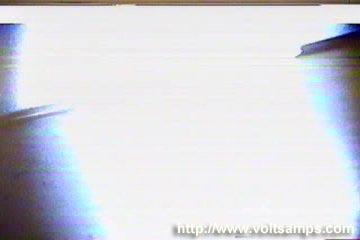
Frame 02 (33.4mS)
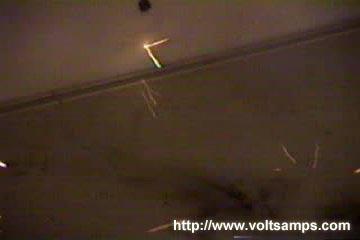
Frame 03 (66.8mS)
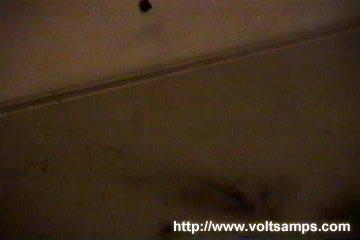
Frame 04 (100.2mS)
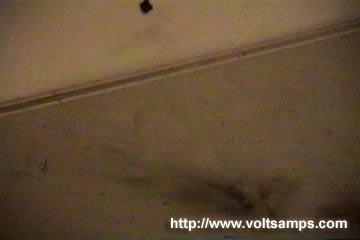
Frame 05 (133.6mS)
The second attempt featured a "clamp" which was supposed to hold the barrel for a short amount of time. Using only a CD and double sided sticker, I did not expect the barrel to hold but it did add more forward momentum to the projectile, since it made a deeper hole in the foam blockade.
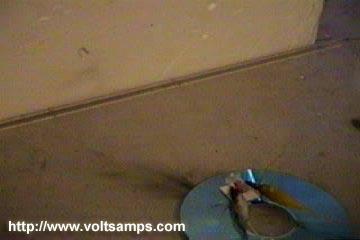
Frame 01 (0mS)
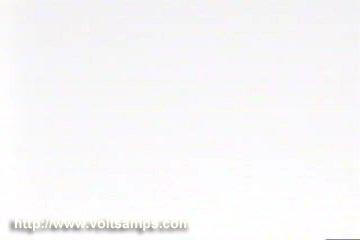
Frame 02 (33.4mS)
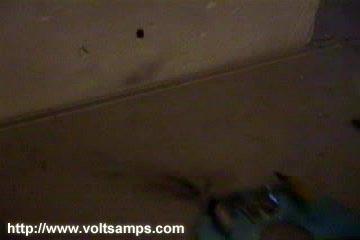
Frame 03 (66.8mS)
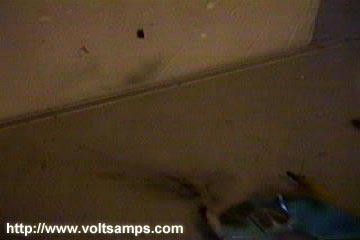
Frame 04 (100.2mS)
Failed attempt:
Previously I had tried to do this same experiment using a ball point pen tube as the barrel and a ball of wet tissue as the projectile. I had drilled a tiny hole (0.8mm) in the back of the pen 4.0mm from the back end all the way through so I could insert a thin peice of solder into it. I stuff the projectile all the way down to the wire. I pulsed the setup and acheived very disapointing yet entertaining results. The entire back of the pen had been shattered and blown to bits so the forward motion of the solder vapors were brief (until the pen came appart). The projectile did manage to leave the barrel and hit the target but the exit velocity was disapointing yet understandably slow.
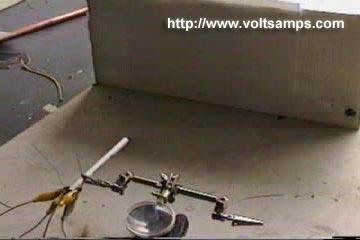
Frame 01 (0mS)

Frame 02 (33.4mS)
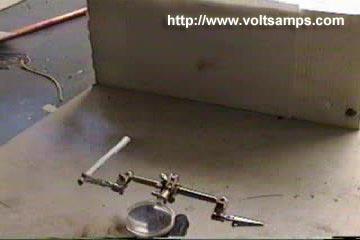
Frame 03 (66.8mS)

Here is an up-close image of the back end of the pen after it was blown to bits.
Conclusion:
After having conducted these experiments I see that it is important to improve various aspects of the setup. Fisrt of all, the barrel should be made of a sturdy material which is also non-conductive. Ceramic is a possiblity. The projectile should be better fit in the barrel and the barrel should be better mounted or supported.
|
 |
|



